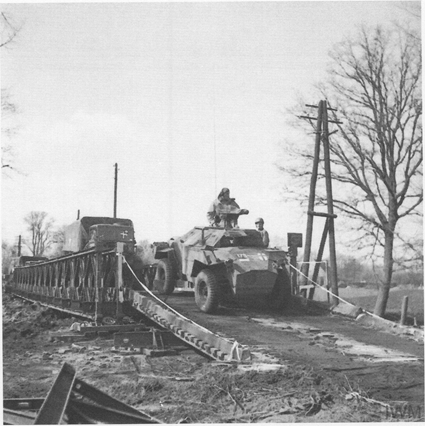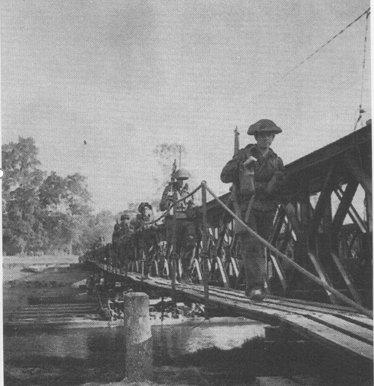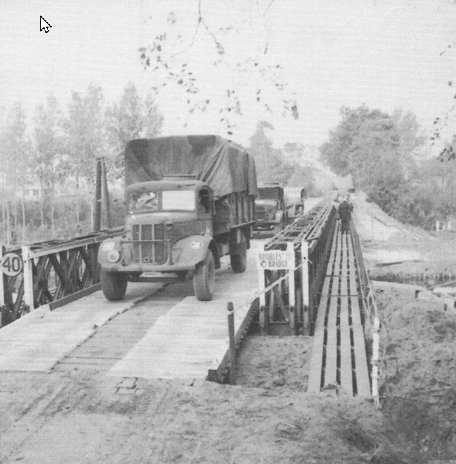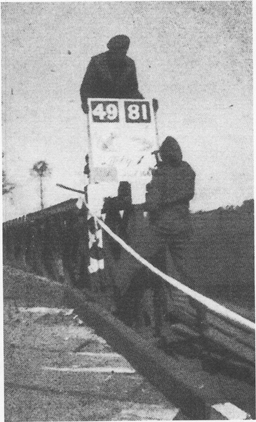
39 CER Museum Dioramas & Plaques

39 CER Museum Dioramas & Plaques

Bailey Bridge
A British design, it was first built by the 6th in England in 1942.
The smaller bridges were assembled on rollers on one side of a river by 20 to
40 soldiers. It typically taking a few hours to do a build. It was then pushed
across the river, jacked down on to base plates and opened for traffic. The
larger bridges had construction crews numbering in the hundreds and could take
several days to build. Once a permanent bridge was built alongside, it was
dismantled and shipped forward for another build. Probably the most widely used
military bridge in history it has been in continuous use from the middle of
World War II until the present day.
Military Police
(Provost Corps). In addition to standard police duties they provided refuge
control and operated prisoner of war cages and camps. In this case they have
provided a 2-person team for the bridge, who are directing traffic, assisting
civilian refugees, directing prisoners to the cages, and briefing soldiers
approaching the front line.
Load Class Signs.
Yellow signs that indicate the vehicle weight the bridge can carry. Temporary
Road. Quickly built by a dozer, from 3 Field Park Company RCE, it uses the
materials at hand, namely the earth from the fields and has turned to mud.
Car 5 Cwt (Jeep).
4x4 light truck of which the 6th had three. One for each of the three platoon
commanders. Built in America. It has left hand drive.
3 Ton Truck. 4x4
medium truck of which the 6th had eight. Built in Canada to British
specifications. It has right hand drive.
M14 Half Track armoured personnel carrier, of which the 6th had six. American built they were
sent to the UK as anti-aircraft vehicles, armed with heavy machine guns. The
British considered them unsuitable for the anti-aircraft role. Since they
needed armoured personnel carriers they removed the guns and converted them
into personnel carriers by adding seats and a rear door. Built in America. It
has left hand drive.
Vehicle Markings.
The 49 in the blue square indicates it is a 6th Field vehicle and the maple
leaf in the gray square indicates it is part of 3rd Canadian Infantry Division
(3rd CID). The door number is its War Department number. The number in the
yellow circle is its bridge load class. The 79 in the black square indicates it
is from the 3rd CID Provost Company
Motorcycle. The 6th
had 16 motorcycles. Used by liaison officers, couriers and reconnaissance
parties. One has been provided for a courier.
Weapons. The soldiers are armed with a mixture of bolt
action Lee Enfield rifles, Sten submachine guns, Bren light machine guns and
pistols.ample text.



